When I was in China working as an English teacher, I decided to cycle around Iran. I finished my contract at the end of November, so I thought I might as well travel to Iran by land. The problem was, I’d be traveling in winter. I’m Portuguese so I knew next to nothing about snow, and winter, and seriously cold weather. I mean, I grew up in Lisbon, where there’s no central heating, and temperatures of 6 degrees Celsius can trigger cold weather warnings. I had spent whole winters without a winter coat. I was 22 by the time I saw snow falling for the first time. But I had decided I would be in Iran by March (in time for Persian New Year) and I wanted to cross the famous Silk Road, so that was that. I would travel in winter.
And, although it is as off-season as you can get in Central Asia, there are many reasons to cross it in winter. Maybe you love the cold. Maybe you’re a loner and a cheapskate, who doesn’t mind being alone for extended periods of time. Maybe you like an extra challenge. Maybe you just want endless amounts of snow. Whatever the reason, it is worth it. And yes, you will slip on the ice and fall at some point (if you’re clumsy like me, it will happen a lot).
So… this is what I learned:
The Good, the Bad, and the Annoying
Starting from Xiamen, in Southeast China, I headed north into Beijing, and then west to Xinjiang, the biggest province of China, where east Asia meets central Asia, and The Road starts.
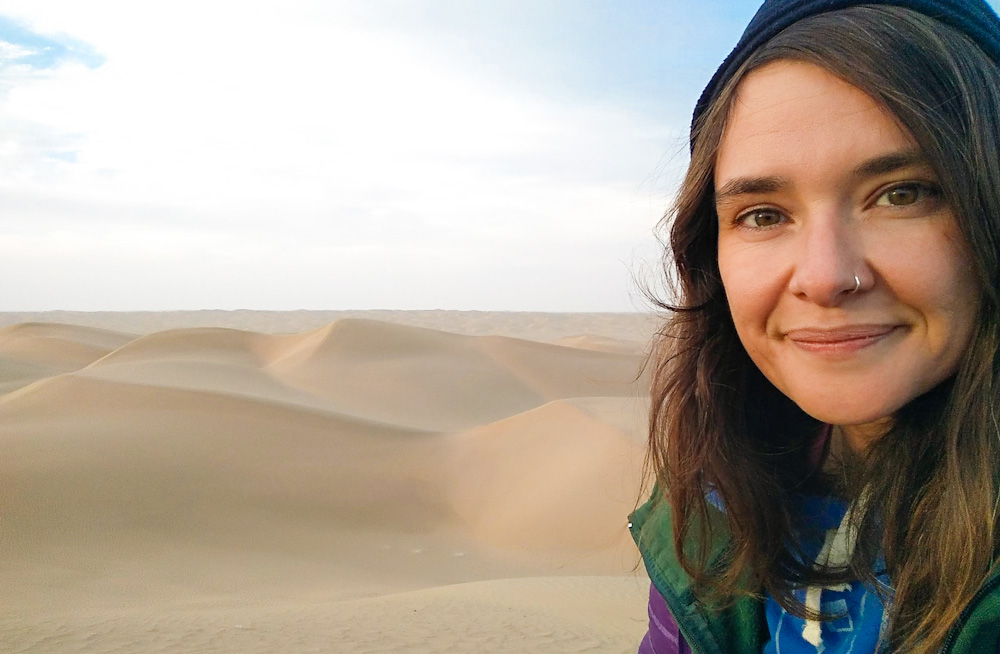
Anita and a sand dune desert that is the size of Germany. Ta Zhong, bang in the middle of the Taklamakan desert in northwest China.
The Silk Road is a term coined in the 19th Century. Contrary to what the name leads us to believe, it isn’t an actual road, but a series of routes that connect East and South Asia to Europe and the Mediterranean. But one can say that the two main terrestrial routes can be divided into the Northern (through Kazakhstan, Kyrgyzstan, and Uzbekistan) and the Southern (through Pakistan India and Afghanistan). Because of the current instability of the southern routes, I had to go through the more peaceful former Soviet Republics.
I knew next to nothing about the countries I would pass through before I decided to start this trip. I discovered a fascinating mosaic of cultures and influences that crisscross through geography and can be seen in the languages, food, and customs of central Asia. The more recent Russian influence is strong (if you like Borsht, you’re in luck. It’s everywhere), but the intriguing nomadic customs still hold strong (especially in Kazakhstan and Kyrgyzstan), and meld with Islam in a fascinating way.
You can also almost trace a line when it comes to the food you find in Central Asia, although it’s hard to know where something came from. I know for sure that the laghman noodles of central Asia came from the Chinese lamian noodles, but where do the ubiquitous samosas originate from? Who can lay claim to Polo (the rice dish that is also known as pulau, plov, pilau or pilaff rice)?
I took full advantage of the winter and ice skated on the highest ice skating rink in the world in Almaty (Kazakhstan), rode a horse in the snow near Karakol (Kyrgyzstan), explored the beautiful village of Arslanbob (also Kyrgyzstan), and walked through the stunning historic cities of Uzbekistan.
And even though the temperatures in the Karakum desert in Turkmenistan plummeted to below zero, freezing the water I had brought with me, I camped out at one of the most astonishing places I have ever visited: the gas crater of Darvaza, also known as The Gates of Hell. I wouldn’t have missed this for the world.
And there’s plenty of good things about traveling in winter. The snow is stunning. I spent months without getting tired of that beautiful pristine snow, especially in Kyrgyzstan. The crunch of freshly fallen snow under your feet, and the feeling of snow covering your eyelashes is wonderful enough to make you forget how cold your feet feel. Also, winter means there are fewer tourists crowding your photos. You don’t have to worry about booking a room or bunkbed in advance, and the prices can be up to 50% cheaper, especially in Uzbekistan. And the hearty, meaty food of this part of the world goes perfectly with cold weather. Tucking into a warm plate of laghman noodles and a pot of warm tea is the greatest pleasure in the world, after a day in the cold.
However, I don’t want to gloss over the cons of traveling the Silk Road in winter. You will find fewer fellow travelers. In Khiva, my favorite city in Uzbekistan, I spent 5 days in an empty hostel and had only books as company. You might also find that certain hostels will be closed, and sometimes you might only find accommodation in more expensive hotels (this happened to me in Hotan, in Xinjiang). The snow might also mean that some places are harder to get to, especially if they are more remote.
I ended up not visiting Tajikistan because of the potential hassle of moving around, although, in hindsight, I regret that I didn’t just take the chance. Snow will also tend to make you lazier. After a few hours outside, all you want to do is to go into a warm chai khana (tea house) and have some tea and meaty samosas. Finally, the potential for hurting yourself by falling in the snow is not entirely negligible. Although, the worst that happened to me was a bruised bum and a sore knee from falling into a snow-covered ditch in Almaty when trying to hail a taxi. My ego was more bruised than my bum, though. It was not a graceful fall.
What you need to get before you go:
You probably already have everything you need. Do you have good waterproof boots? Great. Do you (like me) have OK boots that are already a bit old? That’s ok too, even if by the end of it they’ll be in tatters and won’t definitely be waterproof anymore.
I did, however, buy a few items that were very useful. And in this, I have to raise my hands to the sky and thank those Japanese geniuses at Uniqlo, who came up with those Heat Tech undershirts and leggings, which are super thin and crazy warm. Also, I discovered how awesome wool socks are at keeping your feet both warm and sweat-free. Because sweat, I learned, if it cools down and is in contact with your skin, will make you super cold and miserable. So say no cotton (which gets “wet” easily) and say yes to wool (which is a great insulator, can hold a lot of sweat before it starts to feel wet, and dries faster than most other fibers).
Finally, you will need a hat. I knew this of course, and brought one. Of course, I lost it as soon as I arrived in Beijing and, being my usual cheap self, didn’t bother buying one until I got a massive ear infection in Kyrgyzstan, that put me out for a week. Luckily, the owners of Duet (my hostel in Karakol) took me to the hospital and translated what a very stern Russian doctor told me. And my new buddy Ryan, who was working at the hostel and is the nicest person ever, put up with my moans and kept me company during those days.
So. Buy a hat. And if you lose it, buy another. Just… yeah… wear a hat.
What you don’t need to get before you go:
So, I knew it will be cold. So in a moment of panic, I decided to buy a massive fake Canada Goose winter coat, in Beijing’s Pearl Market. A very heavy and cumbersome coat, with a faux fur trim hood. And it was expensive too. It stayed inside my backpack for most of the trip (until I gave it away), mainly taking up space and making my backpack even heavier. The thing I learned was that comfort and portability are just as important as warmth, and that you can go through a hard winter with a thick hoodie and a Uniqlo down jacket. And that you should never buy a jacket in the Pearl market, no matter how convincing the ladies there are.
In the end, you’ll be traveling in cold countries. If you really need another coat, or warmer socks, or extra gloves, they’ll have them.
Getting around (yes, that means visas and borders):
If you’ve never dealt with visits to embassies, letters of invitation, and stressful interviews, you will now. While some countries are easy to enter (love you, Kyrgyzstan) some take time and are expensive to get into (Uzbekistan) and others are just plain stressful (Turkmenistan). I won’t go into details, for that, you have the wonderful Caravanistan, a website that is essential for anyone that wants to travel around the Silk Road.
Travelling in winter also means that you might have some trouble with closed borders. I was supposed to travel from China to Kyrgyzstan through Kashan-Osh, but just the day before my bus was supposed to leave, heavy snowfall meant a closed border. Which meant I had to travel 1471km back to Urumqi and cross the border into Kazakhstan instead (at that point the only border I could cross).
So be informed, be prepared, and be flexible. Keep on top of your visas. And, even if someone tells you something is not possible, try it. Supposedly it was not possible to apply for a Turkmen transit visa in Kyrgyzstan (according to what they told an unfortunate Dutchman I met). I decided to visit the Consulate anyway and, after an interview with the consul, managed to get my application in.
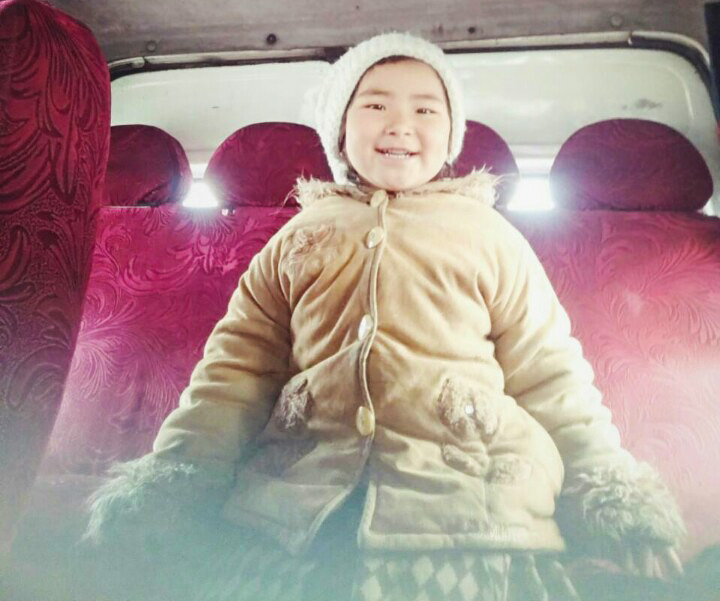
The main mode of transport in Kyrgyzstan is the shared van (aka Marshutka). And this little Kyrgyzs girl is surely the cutest and friendliest travel companion you could possibly have.
Internet
When I arrive in a new country, I usually perform what I like to call “the pornhub test” (not suitable for the most sensitive souls out there). I believe that a country that lets you access porn without problems tends to be a country where the internet is wide open, and you won’t have problems accessing… well, anything. In this respect, out of all the countries I visited on the Silk Road, only Kyrgyzstan passed the pornhub test. Kazakhstan, despite its conservatism, when it comes to pornography, was otherwise quite relaxed, and I didn’t have any problems with other websites. In Uzbekistan, I bumped into the infamous “we can’t find that server” message a lot more. Iran, of course, is famous for having blocked Facebook and Twitter (during the time I was there it also, unfortunately, blocked the Couchsurfing website).
I had a VPN, which worked quite well whenever I needed it, and I’d definitely recommend it so that you can enjoy block-free internet everywhere. But hey, this might be a good opportunity to disconnect and get off your phone.
Quality of internet seems to go hand in hand with openness (with the exception of Iran, which was quite ok, signal wise). Kyrgyzstan and Kazakhstan were quite ok, Uzbekistan was mediocre. I imagine it must be even worse in the summer when you have to share your wifi with many more people (See? another advantage of traveling in the winter).
And Turkmenistan… well… I’ve never seen anything like it. You might as well not even try. I entered the country through Koneurgench, in the north. As far as I know, the internet doesn’t exist in the city. A few days later, after spending a night at The gates of Hell, I arrived in Ashgabat, and fortunately, the daughter of a lady who worked at my hotel told me where to find wifi. I went to the shop of an Internet provider at the Paytagt Shopping Centre and, after paying and leaving them my passport, I was allowed to use the internet. The problem is you can’t access… anything. I asked if I could use WhatsApp, Facebook, Telegram, WeChat, Instagram… and in the end, the very sweet girl who was helping me just smiled and said “no social networks”. I managed to email my parents, but that was it.
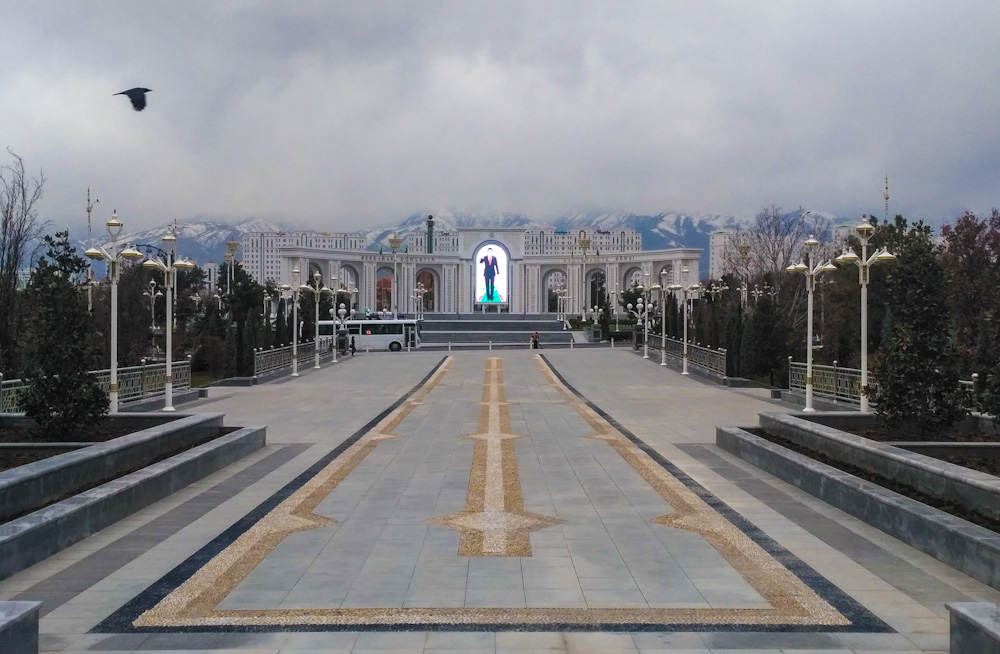
The strange and monumental Ashgabat. That massive neon photo is of the current president. Beyond him, you can see the mountains that separate Turkmenistan from Iran.
So is it worth it?
Hell yes, it is worth it!
Yes, you might end up alone in a hostel for days, and you might be cold and lonely at times. But the flip side of that is that you will always remember everyone you’ve met on the way, not only because there won’t be a lot of them, but also because the best people travel in the winter.
And if you, like me, come from a country where snow is not something you see much of, you’ll learn a lot and, most of all, you’ll never forget those fierce, wide, blistering, pure white landscapes, more magical than any tropical sunset.
Anita Faria is a video editor and lives in Madrid.
She cycles everywhere but stills struggles with using bike pumps. She is also exceedingly good at napping and procrastinating.
You can see more photos from her travels on her Instagram.

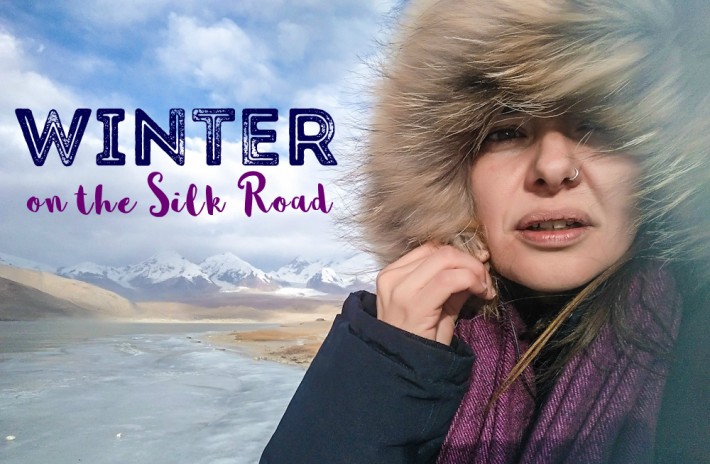
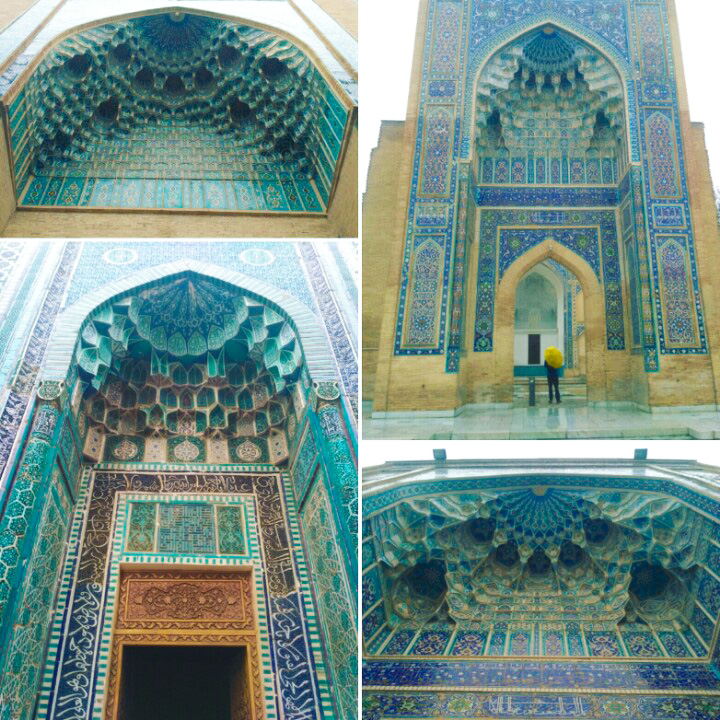
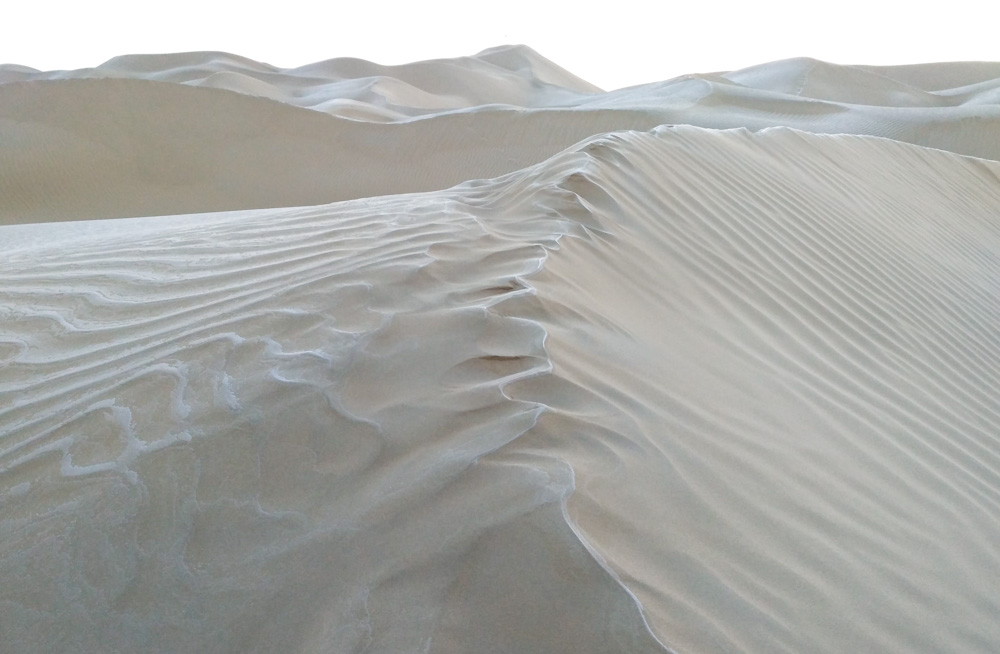
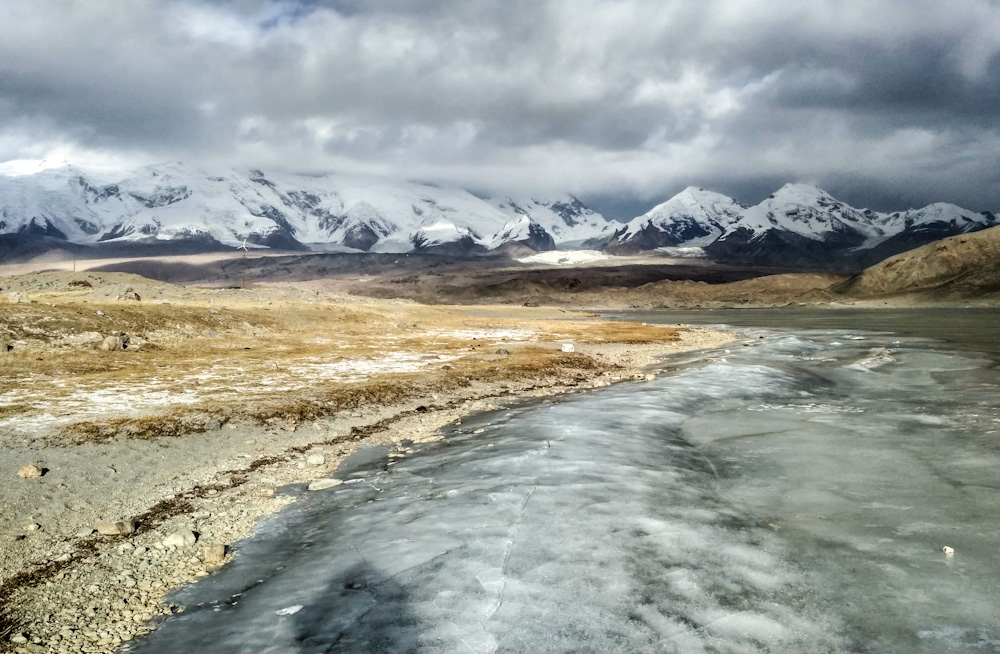
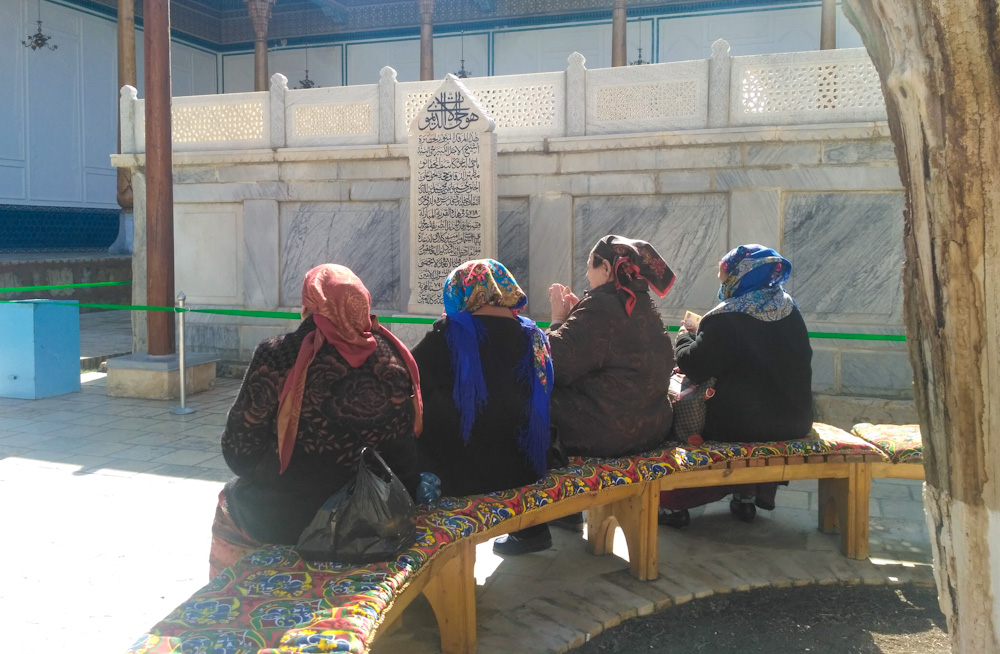
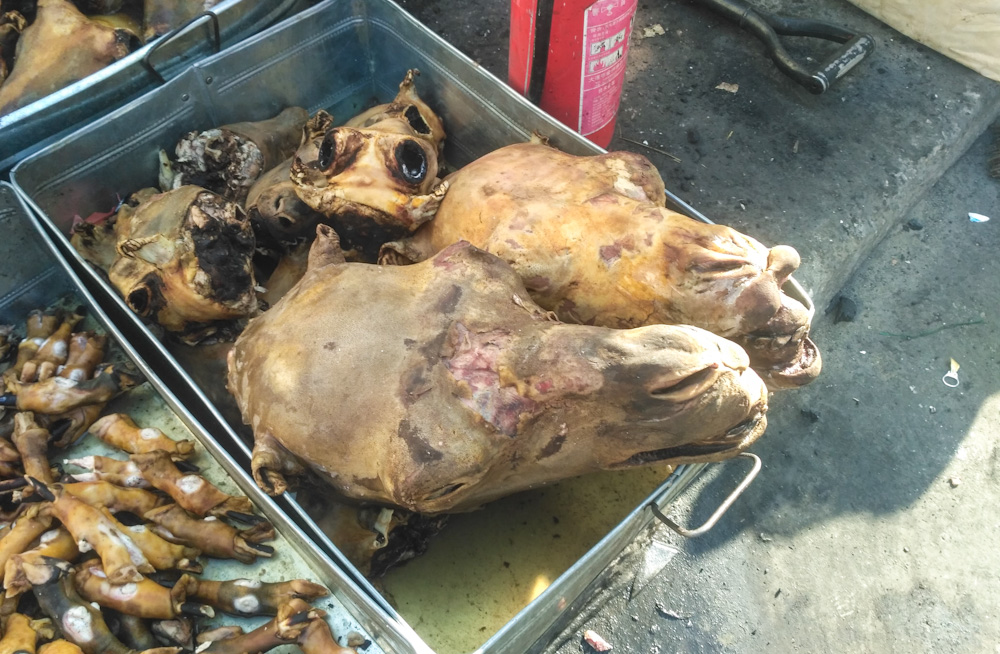
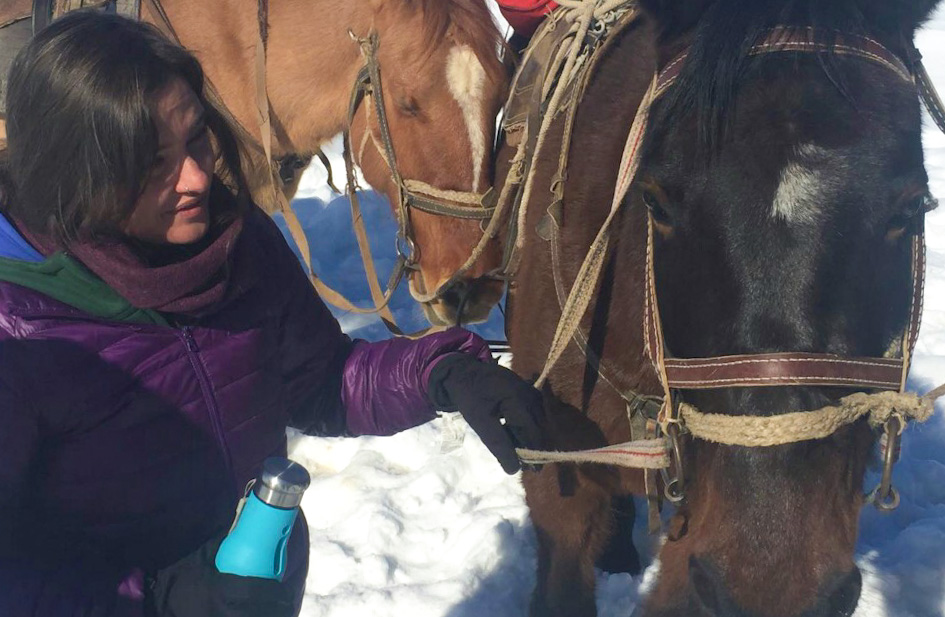
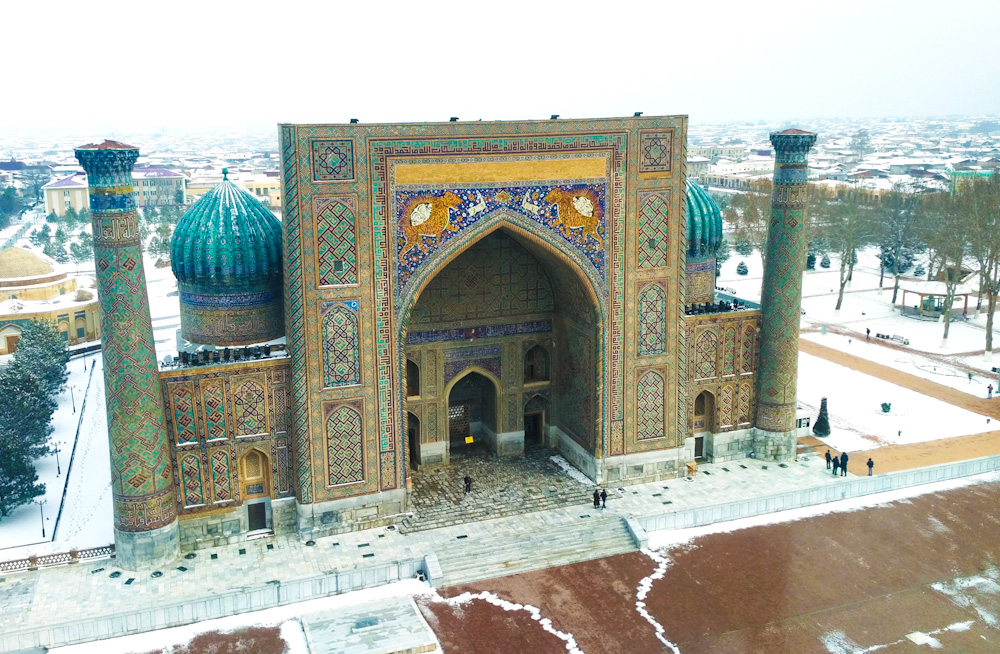
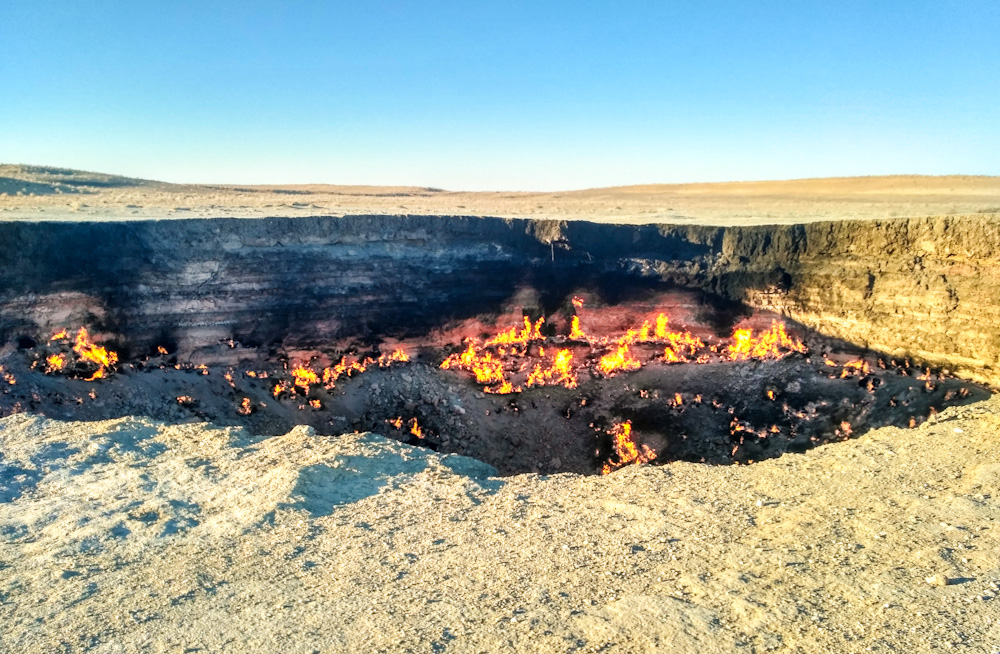
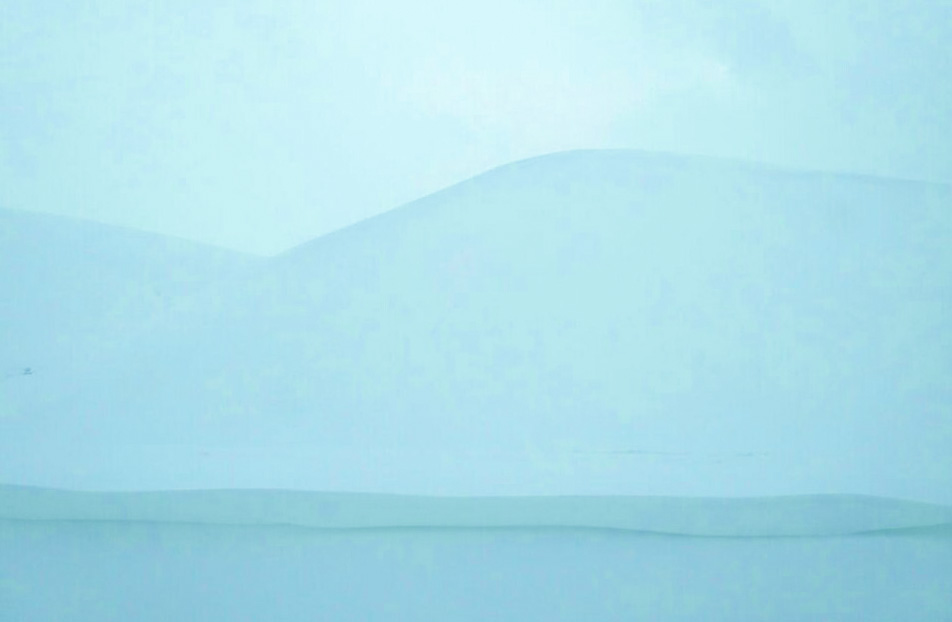
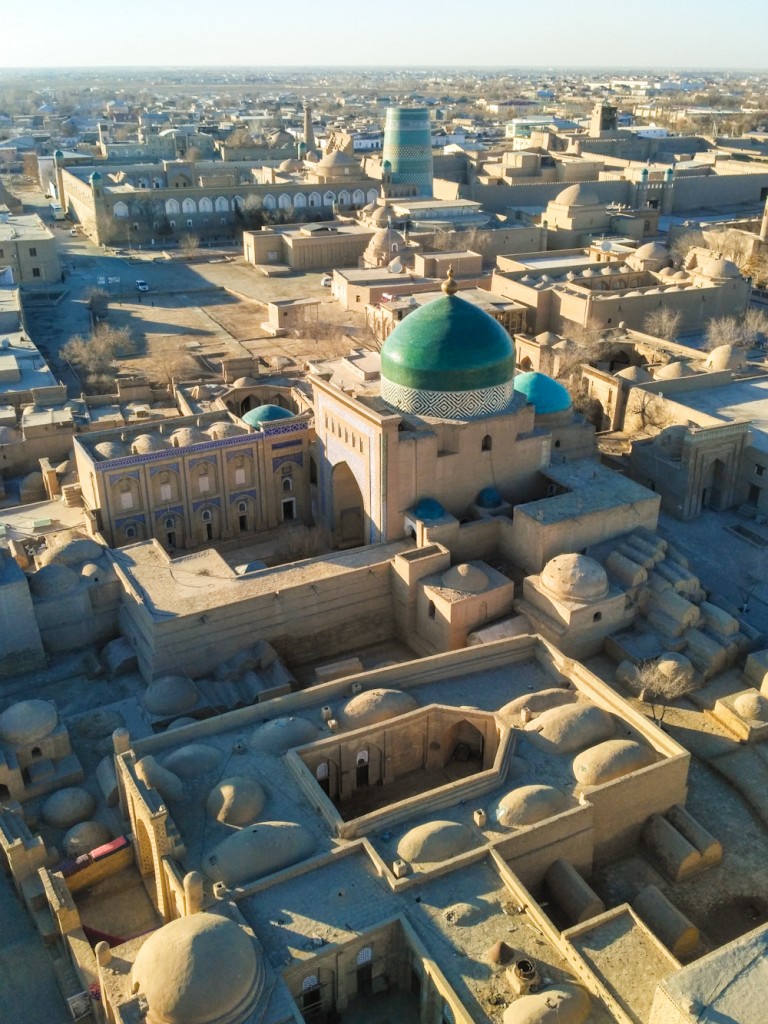
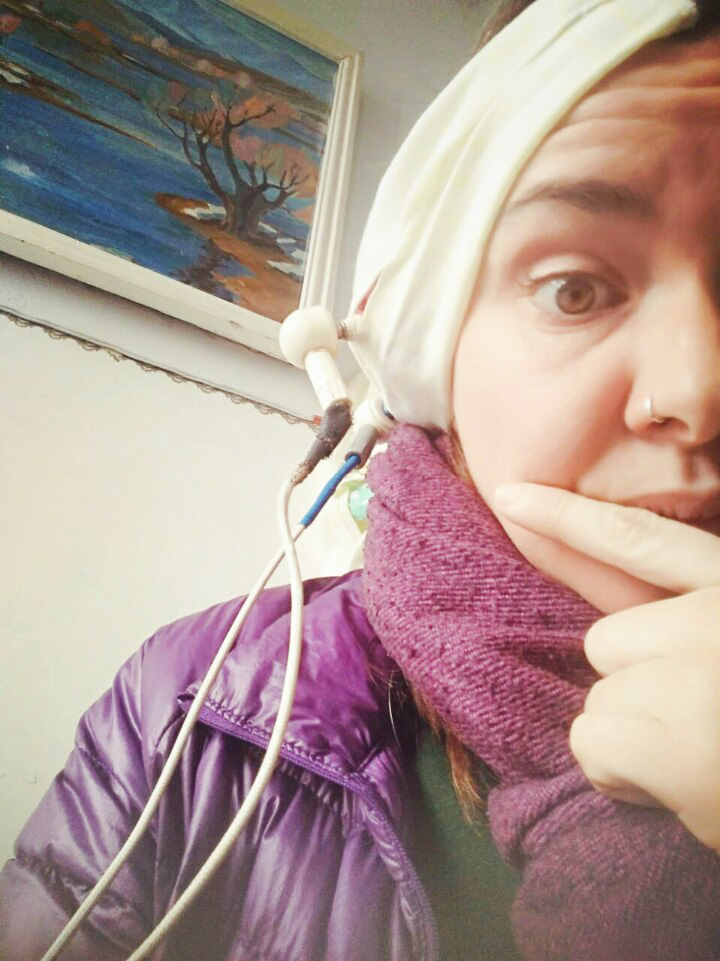
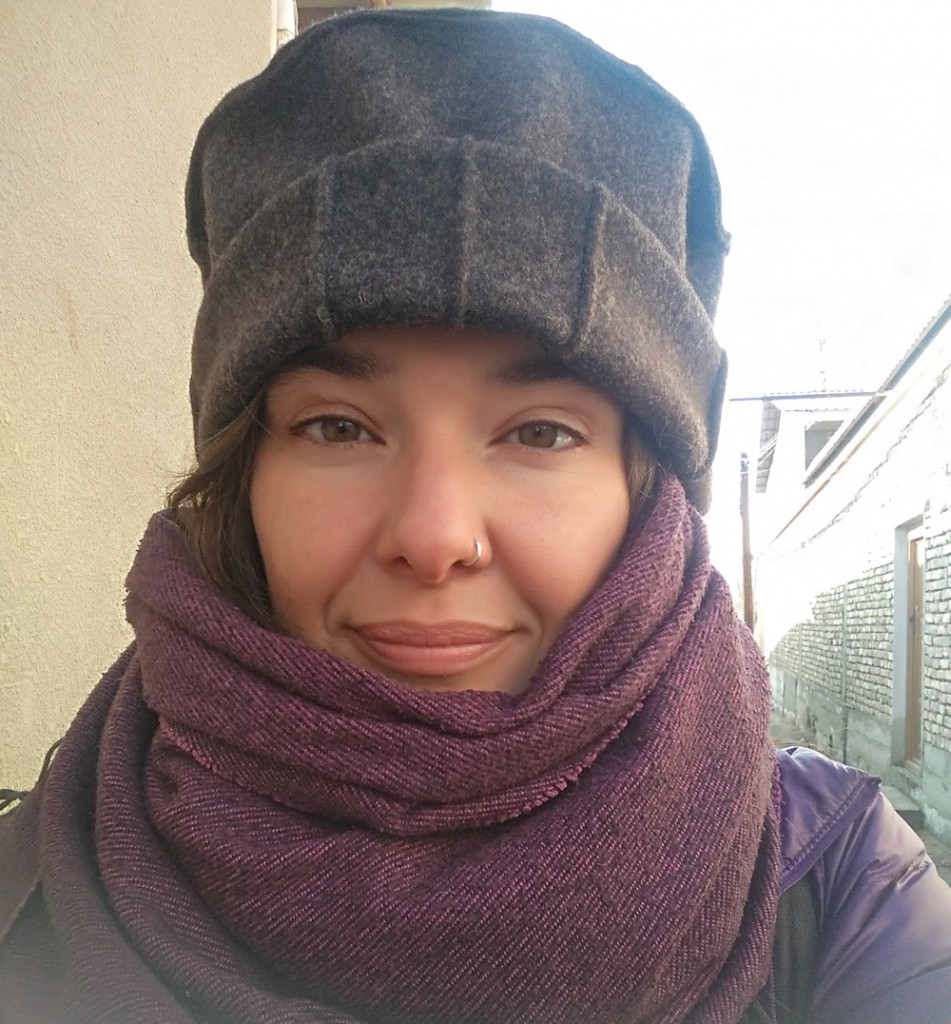
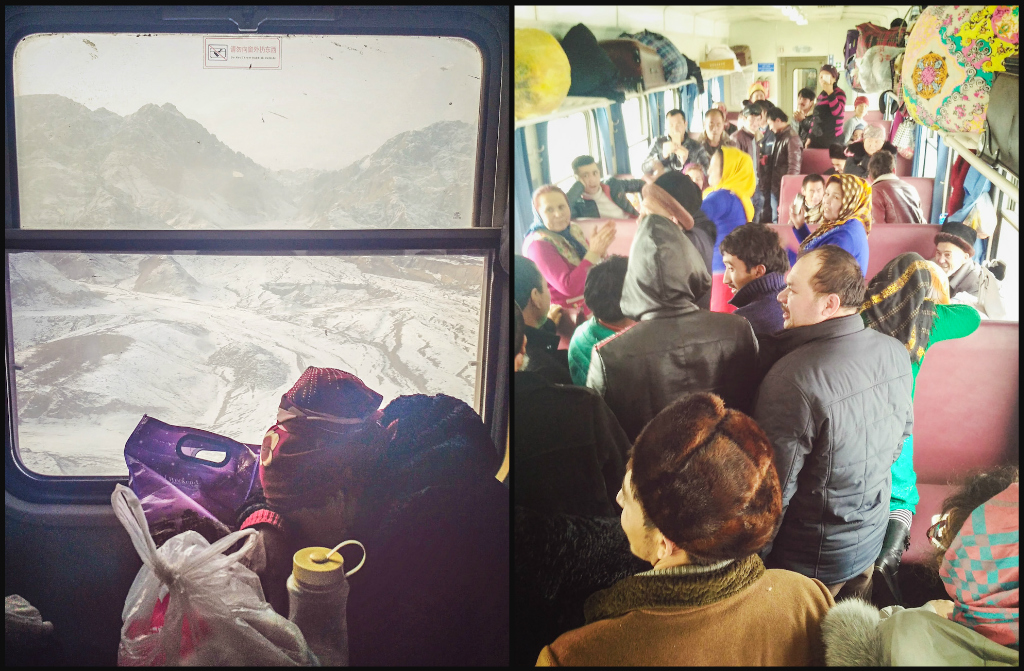
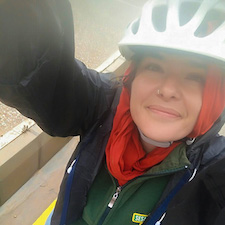
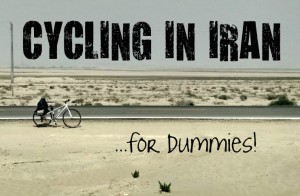
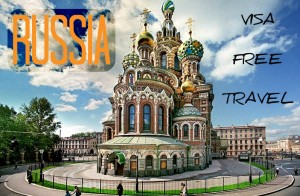
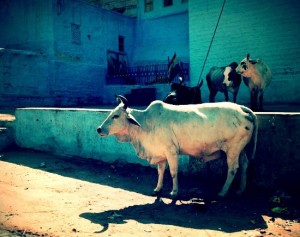
Wow – the Silk Road in winter!! Those pictures and stories of yours make me want to jump on a plane and do it all over again in the colder months!
Dear Anita
May i know how you from which city in China that you cross over to Central Asia?
Hi Anita,
You can travel to Central Asia after visiting Urumqui and Kashgar in China. There are two borders with Kyrgyzstan: Torugart and Irkeshtam. If you cross the first border you can do a tour in Kyrgyzstan and then to fly to Tashkent, Uzbekistan, or drive to Almaty, Kazakhstan. If you choose the second border, then you will visit the southern part of Kyrgyzstan and then continue to Tajikistan. If you have more questions, I will be glad to asnwer.
I am sorry, I was referring to Bernie Seah, answering questions.
Anita, thanks for sharing this article! Great pictures! It is great that you promote tourism in Central Asia. It is usually in summer, when most tourists visit it. But in winter, there is a special charm. Good luck with future travels!
thanks so much Jainagul for the info.
The info is so useful in my planning. I plan to cross over to China from vietnam and travel from there to central asia. But have to put my plan on hold until the outbreak is over.
Silk Road in winter is more than just possible. It can be even more comfortable who dont like hot summers and like winter sports. For that Kazakhstan and Kyrgyzstan have beautiful ski resorts while Uzbekistan with medieval architecture will be great to visit in Winter as well. If you want to learn more, I will be glad to answer.